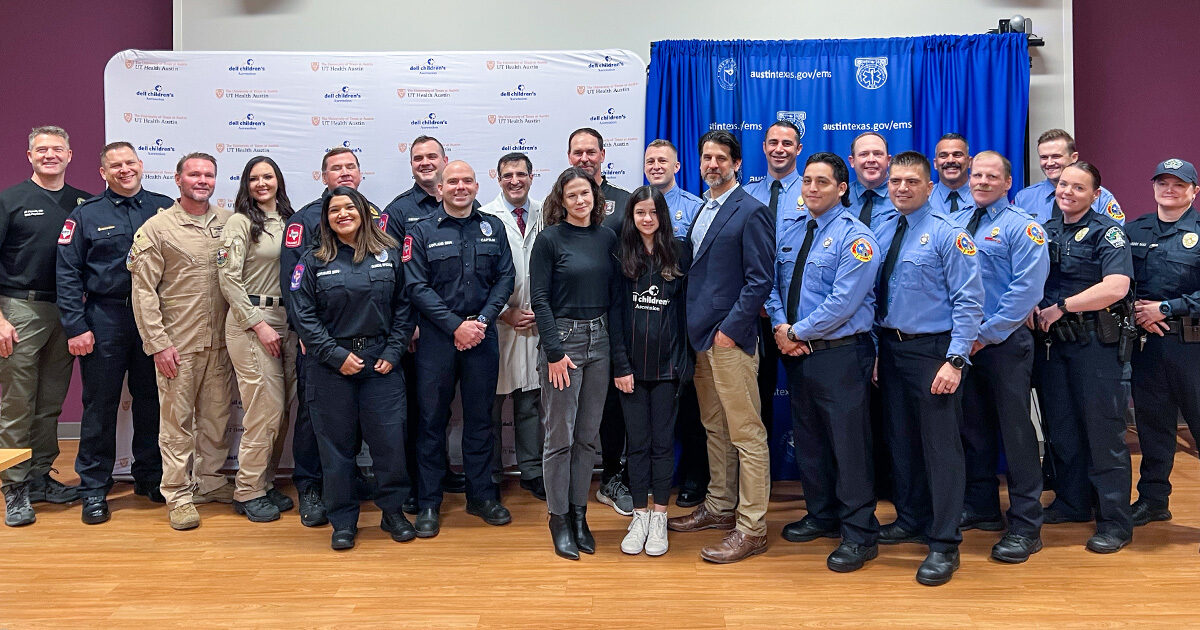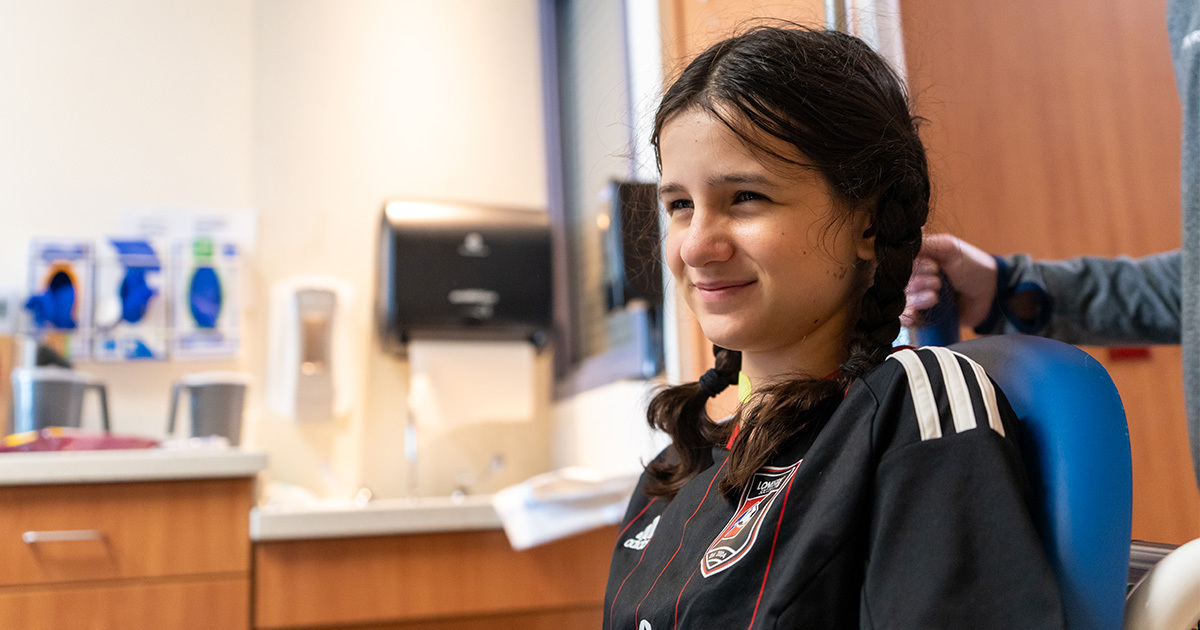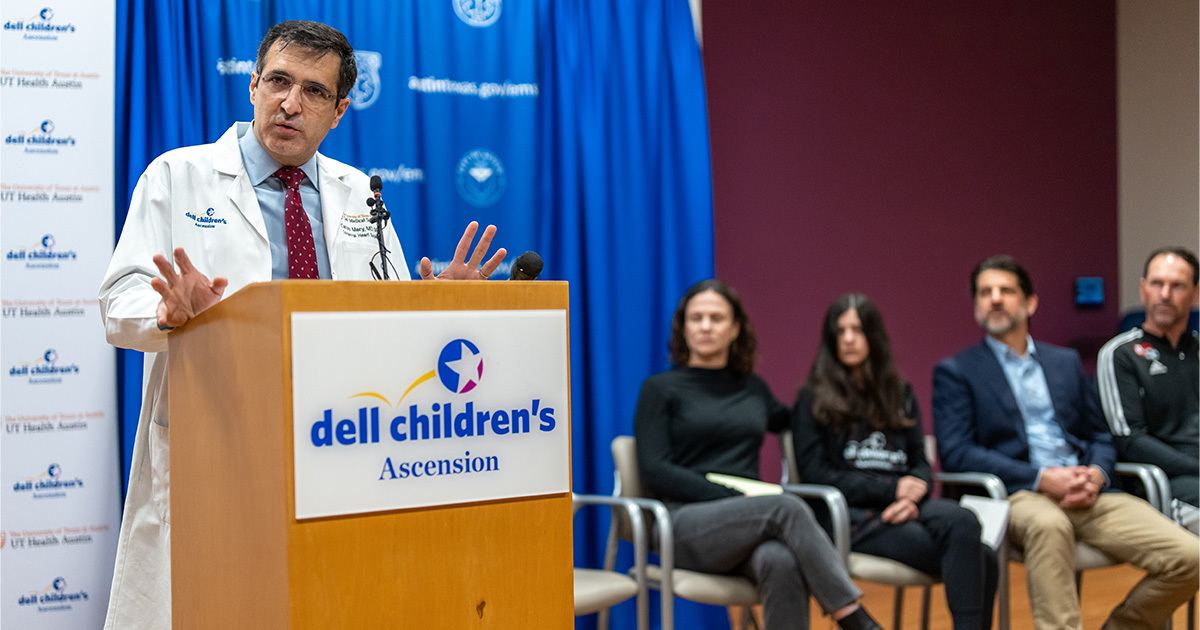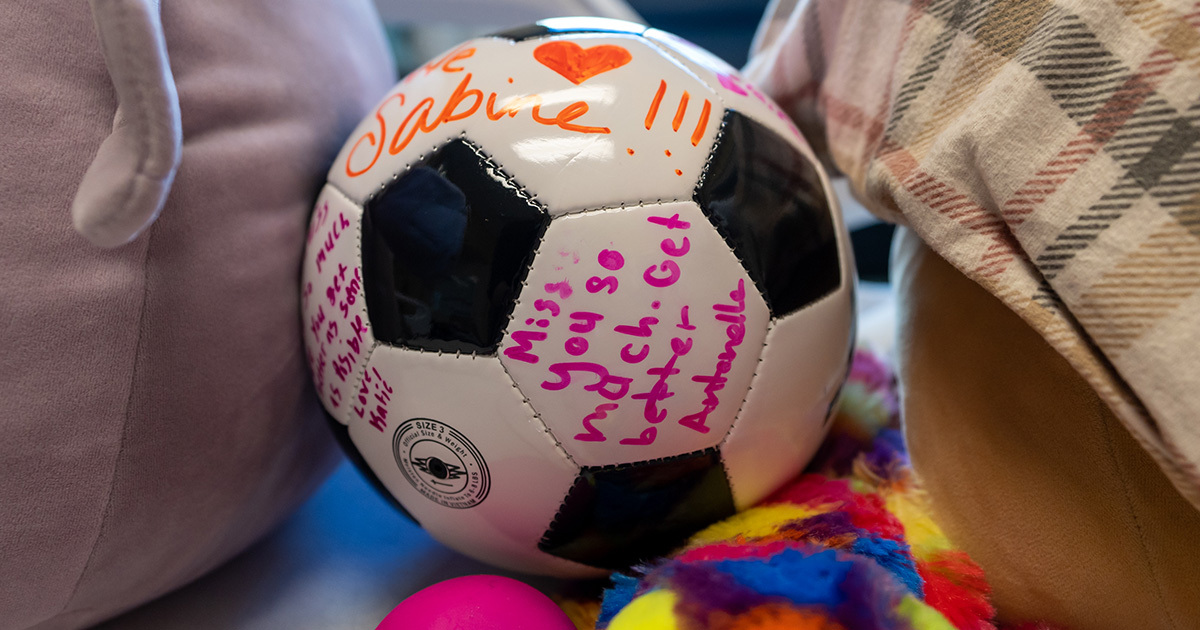Austin Community Rallies to Save a Life
11-year-old soccer player returns to the field five weeks after suffering a cardiac arrest
Sourced from: Dell Children’s Medical Center Press Conference
Written by: Ashley Lawrence

On January 19, 2023, 11-year-old Sabine Barrett collapsed on the soccer field. “She looked fatigued. Her chest hurt. She was having trouble breathing. She couldn’t see well. She couldn’t hear well. We calmed her down, gave her some water, and eventually she returned,” says Dan Barrett, Sabine’s father. “When she didn’t run after a ball I sent to the middle of the field, I jogged out there to meet her. She put her arms around me and said, ‘I’m dizzy,’ and she just collapsed in the center of the soccer field.”
Dan called out to Lone Star Soccer Club coach Nic Snyder for help. Coach Snyder sprinted 40 yards down the field to administer CPR while Sabine’s father called 9-1-1. “I’m so glad that the outcome is what it is,” says Coach Snyder, “and I’m happy that I was prepared to do what needed to be done.” Coach Snyder continued chest compressions until EMS arrived.
Sabine Barrett suffered a cardiac arrest due to a rare congenital heart anomaly known as a coronary artery anomaly. “Coronary artery anomalies actually occur in about five in a thousand people, and most of the people don’t even know that they have them,” says UT Health Austin congenital heart surgeon Carlos Mery, MD, MPH, who serves as the Surgical Director of the Coronary Anomalies Program within the Texas Center for Pediatric and Congenital Heart Disease, a clinical partnership between UT Health Austin and Dell Children’s Medical Center.
“In Sabine’s case,” continues Dr. Mery, “the left coronary artery emerged from the right side of the aorta and traveled inside of the wall of the aorta before emerging. The segment of the coronary artery inside of the wall can get compressed during exercise, cutting off the blood supply to the heart. This creates an arrhythmia, which is what caused the cardiac arrest.”
After 22 minutes of CPR, Sabine’s heartbeat returned, and she was airlifted to Dell Children’s Medical Center and rushed to the Cardiac Care Unit within the Texas Center for Pediatric and Congenital Heart Disease, where she underwent open-heart surgery.

“Once Sabine arrived in the ER and was taken back to the operating room, it was the amazing work of our multidisciplinary team of pediatric cardiac experts from across a variety of specialties who were able to correct the defect and contribute to Sabine’s success,” shares Dr. Mery.
Sabine was discharged from the hospital and ready to return home 5 days after surgery. “There is no better group of individuals than the men and women of Austin-Travis County EMS, the Austin Fire Department, the Austin Police Department, STAR Flight, and Dell Children’s Medical Center. If not for all these people, we wouldn’t be celebrating Sabine today,” says Robert Luckritz, who serves as the Chief of Austin-Travis County EMS for the City of Austin. “I think it’s important for us to recognize that it is that cohesion, that continuum of care from the 9-1-1 operator that takes the call to the response of EMS, the fire department, the Austin Police Department, STAR Flight, and of course, the nurses and doctors at Dell Children’s that really made this so successful.”
“Bystander CPR, getting CPR started, getting early defibrillation out there, getting defibrillators across the city, is the key to success and the key to survival in cardiac arrest,” continues Chief Luckritz. “I encourage all of you to go out and get training if you’re not CPR certified. If you haven’t had a CPR class, please learn CPR, especially if you’re involved elsewhere in this community or if you’re a community leader.”
When performed in the first few minutes of cardiac arrest, CPR can double and even triple a person’s chance of survival.

“Performing quality CPR until a medical professional shows up to assess the situation and elevate care to the next level can make all the difference,” says Dr. Mery. “We’ve even had patients recover after 90 minutes of CPR who were completely neurologically intact.”
“These types of calls literally take a community for everything to come together,” says Mike Wright, who serves as Assistant Chief of Austin-Travis County EMS for the City of Austin. “What leads from that tragic moment to today’s miraculous recovery is when every single link in the chain of survival is intact.”
Chief Wright is referring to the Five Links in the Chain of Survival—early access, early CPR, early defibrillation, early advanced cardiovascular life support (ACLS), and early post-resuscitative care.

The actions of Sabine’s father, Coach Snyder, the Austin Police Department, Travis County EMS, the Austin Fire Department, STAR Flight, and Dell Children’s Medical Center all contributed to the chain of survival and played a vital role in Sabine’s successful recovery.
“I want to be on the women’s national soccer team,” shares Sabine when asked about next steps. Sabine has big plans for her future, and she’s well on her way, having returned to the soccer field only five weeks after surgery.
To learn more about the Texas Center for Pediatric and Congenital Heart Disease, visit here.